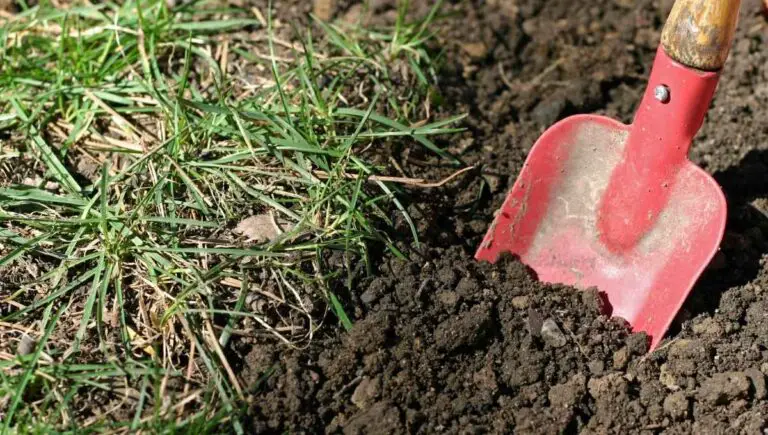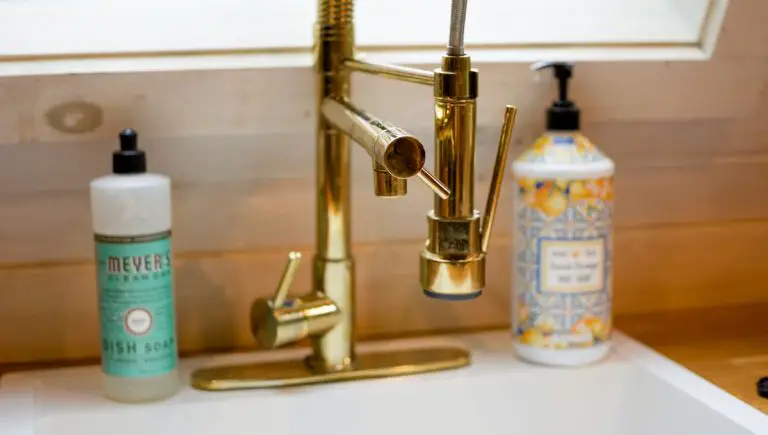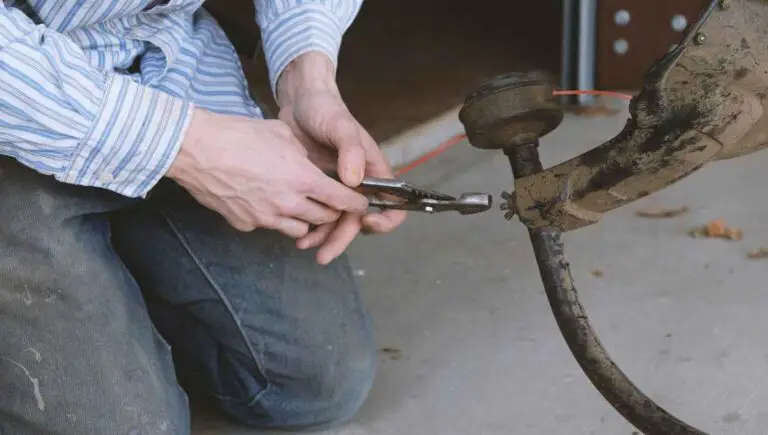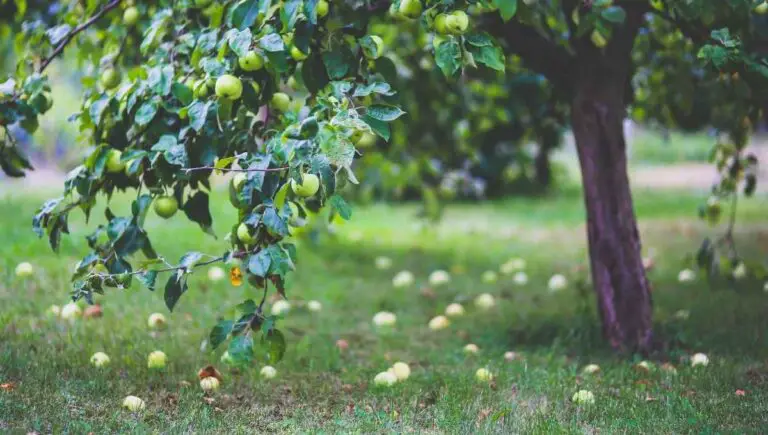How to Grow Potatoes Indoors For a Healthier Lifestyle
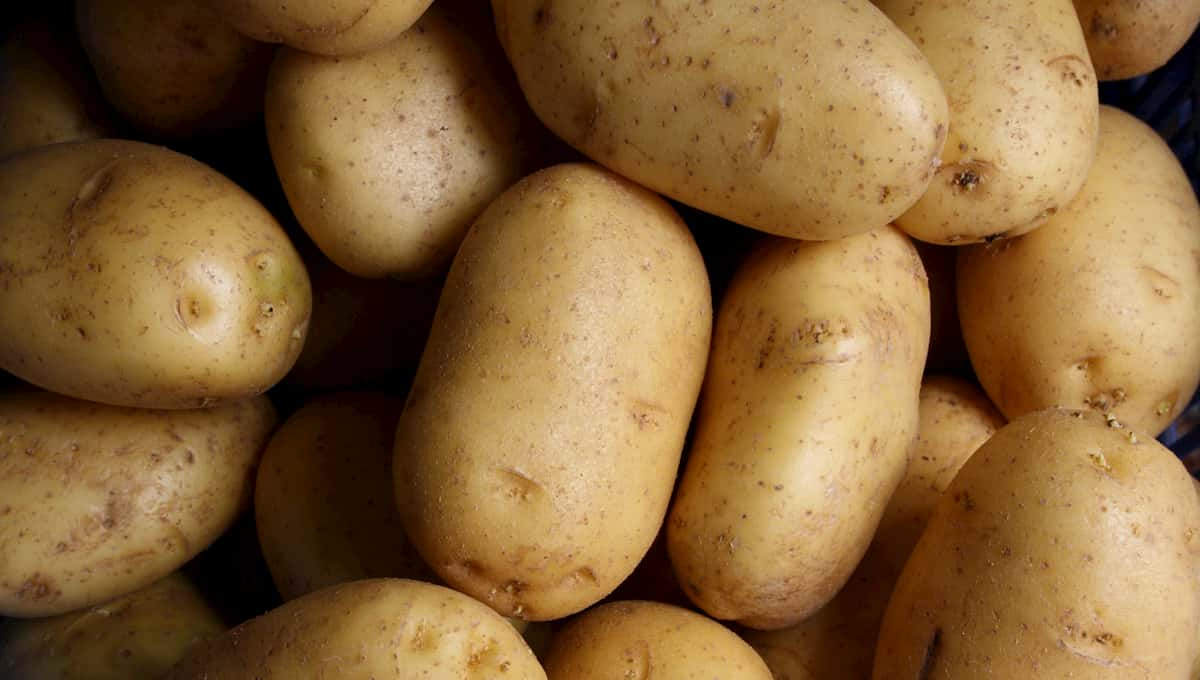
Potatoes are an everyday staple for most American households. Fried, boiled, roasted, mashed, hashed, or grilled – we can’t get enough of these versatile vegetables! Are you interested in learning how to grow potatoes indoors? From sprouting to harvesting, here’s everything you need to know!
If you have ideas about starting your own vegetable garden, spuds are a good place to start, especially if you’re new to gardening as they’re easy growers. You don’t need green thumbs because growing potatoes indoors isn’t particularly complicated.
Aside from taking on gardening as a new hobby, it’s appealing to grow potatoes for a variety of reasons.
This article looks at why people are turning away from store-bought potatoes, the multiple ways tubers can be grown quickly and effortlessly, and how growing potatoes indoors can be fun.
Why Are More People Growing Potatoes Inside?
Do you love the taste of a simple potato, hot, slathered in butter and seasoned with rosemary? Newly harvested homegrown potatoes are far more flavorsome than the variety we buy at the store – larger, too, depending on the planting method that you use.
If you’re a family who eats this tasty and nutritious carbohydrate daily, you’ll gain immense pleasure by providing vegetables that came straight from your indoor garden.
Apart from the taste, consuming organic vegetables are better for you than the shop-bought brands because they aren’t doused in chemicals that slow down their sprouting. That way, your family isn’t digesting a plethora of harmful chemicals.
Any gardener will know the frustration of having their crops ruined by outdoor pests. Learning how to start a potato plant indoors allows you a closer watch over your growing vegetable, ensuring that no critters feast on your homegrown potatoes.
Can You Grow Potatoes Indoors?
You don’t have to be a skilled and experienced horticulturalist to learn how to plant potatoes indoors. While they require specific conditions to survive, it’s difficult to destroy potato plants unless you completely neglect them.
On top of that, spuds are produced year-round, so you won’t have to give up your beloved spuds when the cold sets in. While we recommend that you start to grow potatoes indoors in spring, it’s still possible to enjoy these vegetables even in frosty weather.
If you have green thumbs and hate to watch the rest of your garden die in the cold and harsh months, owning a thriving potato patch will give you something fruitful to harvest until you can tend to your yard again.
Steps on How to Plant Potatoes Indoors
The way potatoes develop is unique and fascinating, and so playing an active role in growing your own potatoes won’t just lead to a healthy batch of perfect spuds, but it’s also a fun and educational activity for the entire family to partake in.
Step One: Buy Seeds To Grow An Indoor Potato Plant
Potatoes grow from other potatoes. However, before you venture out to buy a sack of store taters, remember that these are industrial farm produced spuds covered in pesticides. By using them, you’re defeating the purpose of growing organic, backyard tubers.
At the same time, if you decide later on to re-pot your plant outside, these chemicals could spread and potentially kill your other plants.
We recommend seed potatoes, which can be purchased at most nurseries, as well as health stores that sell organic vegetables.
If you don’t have the time to browse nurseries or health stores, purchase organically grown seed potatoes here.
Step Two: Identifying The Eyes And Sprouting
You’ve probably heard about the eyes of potatoes, which are the sprouts that grow on a tuber. These sprouts appear when the vegetables are ready to reproduce.
There must be sprouts for new potatoes to grow, so each of the seed potatoes you use should have between two and six. The process which we use to encourage sprouting is called chitting and can be implemented in a variety of ways.
There are different methods on how to grow potatoes from an eye that eventually transforms into an indoor potato plant; the one you use is up to you.
Some people store their seeds facing upwards in empty egg boxes for up to two weeks or until green shoots start to show. Others place whole potatoes in soil and allow nature to do its work, this method may take longer, but the plant will germinate after some time.
A standard method of choice is to cut up the vegetables, either in halves or quarters and leave these pieces to dry. Each segment should have at least two sprouts a piece. Otherwise, a fruitful yield isn’t guaranteed.
If you’re using potatoes from last season’s harvest, you’ll need to freshen these up and encourage them to sprout. If you don’t, they’ll rot in the soil, and your harvest will probably fail.
A popular trick is to mix your spuds with onions, bananas, or apples in a sealed bag – the assorted produce will release enough Ethylene gas for faster sprouting.
The number of shoots is tantamount to the size of the crop you’ll yield. Fewer eyes mean fewer but larger potatoes while more eyes equal to a large batch featuring small-sized spuds.
Step Three: Planting And How To Start A Plant
Before planting your seeds in the soil, you’ll need to find a suitable container. Tips on how to grow potatoes in a container indoors are pretty simple. From nursery-bought pots and containers you find lying around the house to potato condos and smart pots, spuds can grow just about anywhere, granted it receives enough sunlight, nutrients, and water.
You can even plant your seed in empty trash bags or fertilizer bags, granted they don’t get too hot in the sun.
Whatever shape or form your container comes in, be sure that it has an appropriate drainage system to prevent the plant from becoming waterlogged. You can do this yourself by poking holes under the container.
These eco-friendly and reusable potato planter bags make planting, growing, and harvesting your vegetables easier.
Next, layer the bottom of the container with a potting soil of your choice, mixed with an organic, slow-release fertilizer. For optimal growth, diluted liquid fertilizer, such as fish emulsion, should be added to the soil every few weeks.
Next Steps
Top up the soil regularly because direct exposure to the sun could impact a potato plant’s development. When the plant is near to reaching its full development, hill the plant. The process of hilling entails mounting the plant with soil, including the leaves, in order to protect it from the harsh sun.
Use Burpee Organic Premium Potting Mix to provide your vegetables with the nutrients they need, combined with Jobe’s Organic Granular Fertiliser.
How Do Potatoes Grow Underground?
Some people mistake potatoes for a root vegetable, but actually, potatoes grow from a stem called a stolon. The tuber, the edible part of the tuber, is a thickened stem that grows sprouts and leaves.
These plants grow quickly and germinate best under cool conditions in well-lit areas, so you can enjoy multiple spud-based dishes approximately 15 to 20 weeks from planting.
Harvesting and Growing a Potato Plant Indoors
Some people describe potato harvesting as the best part of the planting experience, akin to searching the earth for treasures.
You can either wait until the end of the harvesting season or by sticking a finger into the soil and feeling around for tubers that are fully-grown and ready to eat.
One way of knowing for sure that the spuds are ready to be unearthed is when the plant begins flowering, or its leaves wither and turn yellow.
Once you’ve removed your batch of sprouts, you may notice they’re yellow. Leave them out for a few days. A yellow potato contains toxins that could make you sick if consumed in large quantities.
Once the color fades, your harvest is safe to eat. If you don’t consume the vegetables immediately, store them in a cool, dark place to prolong their freshness.
What Are Some of the Differences Between Starting Potatoes Indoors Over Planting Them Outdoors?
Unfortunately, not everyone has the yard space for an extensive vegetable garden. So when space is limited, the answer as to the question of whether potatoes can be grown indoors is that it’s not only a viable but a recommended option.
While potatoes are self-sufficient vegetables, they require more vigilance when grown inside a container – this means watering the plant enough so that the soil is moist, not wet or dry. You can test this by sticking a finger an inch deep into the ground.
One surefire way of knowing whether you’re giving your houseplant enough to drink is by installing a water draining system or creating your own. The water that seeps through at the bottom tells you all you need to know.
You’re also going to need a lot of space for growing potatoes. You may need to plant segments of your potato into separate containers, especially if they’re small, or transfer the plant to your backyard where it can continue to grow. Otherwise, your yield is likely to be measly and disappointing.
How to Grow Potatoes in a Small Space
We’ve mentioned before that tubers grow anywhere, granted there’s enough space, ergo the bigger the pot or container that’s used, the better.
However, it’s still possible to maximize your harvest even if you don’t have a whole lot of space to work with. Potato towers are structures that you can easily construct, that help you to grow the popular spud in a confined setting by growing them vertically.
Juries out on this if potato towers are 100% effective, where online opinions are mixed. And, at the same time, while the potato tower is a space-saver, it’s a construction better suited to the outdoors.
So unless you have a small garden or patch of lawn, you’ll have to settle for a potato plant that only serves a decorative purpose if you’re hard-pressed for room.
With its pretty flowers and green foliage, these plants are pleasant to have around the home and can spruce up a place. On top of that, they’re easy to look after and require minimal maintenance.
Growing Potatoes Hydroponically
If you’re undeterred by your lack of space, you might consider planting hydroponic potatoes.
A hydroponics planting system can be used for a wide variety of plants, but more commonly for growing Irish and white potatoes, as well as other types of vegetables that are easy to grow and don’t require as many nutrients to survive.
It’s a convenient method for harvesting potatoes when the soil conditions are unfavorable, or there isn’t much space in your garden to support these vegetables. The soilless technique uses nutrient-rich waters to produce bountiful crops. So even if you’re in the middle of a city, you can still enjoy the perks of growing your vegetables.
Hydroponic potatoes are said to grow faster than conventional tubers because they receive the precise amount of nutrients that are needed, so the risk of a deficit or being drowned is minimal. At the same time, the groups yielded are said to be larger in quantity.
Typically, one of the mediums people use for this unique way of planting is perlite. Perlite, which appears in small, white specks, is a type of soil amendment that has many different uses in society. It’s popularly utilized in gardens that require additional tender, love, and care.
The mined volcanic compound is not only effective in absorbing excess water but is also a non-toxic mineral that will optimize the conditions for which your potatoes grow.
Choosing Your DIY Hydroponic System
Depending on the space available to you, the size of the crop that you’d like to grow, and how much you’re willing to spend, there’s an assortment of hydroponic systems that you can employ. The main ones, which are suitable for beginners, include wick, water culture, ebb, and flow, which we’ll discuss in more detail below.
Wick System
The Wick System is the easiest and simplest to use, comprising a reservoir, a growing medium, wicks, and a container.
At the bottom, you’ll place your reservoir filled with water and the nutrients your plant needs. On top, place a container filled with your chosen medium, for example, perlite. The two components are connected by a wick, from which the nutrient-rich waters travel to reach the medium. The plant then absorbs the water it requires.
Ask for a second opinion on how to start potatoes indoors before setting one up. A wick system is more commonly used for microgreens and herbs, and not vegetables that need plenty of water to remain hydrated.
Water Culture
This system may be more suitable for potatoes and other plants that require ample supplies of water on a daily basis. Plus, it’s made up of three parts, so the setup is quick and easy.
All you need is a reservoir holding water, a styrofoam platform that holds your plant, and a pump that channels oxygen toward your plants.
Ebb And Flow
An Ebb and Flow System is more complicated in that it requires a pump to flood your chosen medium. Water that is not used is drained back into a reservoir. One major advantage of using this system is that you can set a timer for your plants.
Planting And Growing Hydroponic Potatoes
The same with growing potatoes in the traditional sense, you need a seed potato so that you can grow potatoes indoors. Invariably, you should use seed potatoes over regular-store bought ones, because as mentioned before, they’re sprayed to stunt their growth.
Lighting
Hydroponic potatoes require as much sunlight as conventionally-produced spuds. To ensure optimal growth, place your containers in a sunny spot for six to eight hours a day, being careful to avoid direct sunlight.
You don’t need soil or a garden to grow potatoes. Harvest your own hydroponic potatoes using this DIY indoor garden kit.
How to Grow a Potato in Water
You’ll probably remember growing potatoes in water as a fun experiment from your school days. Growing a plant in water is a project that can involve the whole family.
If you’re a budding gardener, helping your children to grow potatoes from scratch is a teachable moment that shows them where the source of their food comes from. Not only that but seeing visible results is exciting in knowing they had a hand in the vegetable harvest.
Grow Your Own Potato In Water Following These Basic Steps
- Depending on their size, halve, or quarter your potatoes. Make sure to avoid cutting into the eyes – each piece needs these to grow.
- With four toothpicks, skewer the potatoes around its middle. Don’t penetrate too deeply, because the length of the toothpicks will be needed for balance later.
- Find a glass the rim of which can hold the potato, then fill it with water, and place the vegetable at the top balanced by the toothpicks.
- The bottom of the potato must be submerged in water.
- Once a significant amount of growth has occurred, considering replanting the potatoes in your backyard if you have one.
Growing Tips And Tricks
The water may become cloudy as the potato produces starch. You must replace it with clean water.
Tips and Tricks on Growing Potatoes Indoors During Winter
We can’t stress enough how resilient potatoes are. While you can pick them from your vegetable patch year-long, the ideal time for growing potatoes is during the spring when the soil conditions are at their most favorable, and when the plants can receive the recommended six to eight hours of sunshine in a day.
When it’s freezing outside, the task of growing potatoes becomes tricky but not impossible.
If you live in a cold state where natural warmth and sunshine are hard to come by, you’re going to need a few tools for growing potatoes indoors in winter.
A Grow Light
It’s worth your while to buy a grow lamp to help your plant with photosynthesis. A grow light is an artificial light source that is used to supplement or replace naturally occurring light. It’s an efficient method on how to grow a potato plant indoors, even during the heart of winter.
There are several different types of grow light you can buy online, so it’s understandable if you’re overwhelmed by the wealth of choices. However, growing potatoes under LED lights are usually a safe bet. The light emitted from an LED produces little heat, which is good because the foliage of your plants won’t get burnt in the process.
On top of that, it doesn’t use much electricity and lasts longer than the average fluorescent bulb.
Give your potatoes a helping hand they need with a sophisticated grow light featuring five different modes and more.
Can You Only Grow Potatoes Indoors?
While potatoes are one of the easiest vegetables to grow, you might crave some variety after a while, and once you’ve gained confidence in your gardening skills..
Sweet potatoes are being touted as healthier carbohydrates than ordinary potatoes and can also be grown indoors. The critics may argue this point, but you have to agree that nothing beats sweet and crispy sweet potato wedges.
Harvesting a crop of sweet potatoes takes a while, requiring ample warmth and heat, so be prepared to wait at least six months before they’re ready to eat.
How Easy is It to Start a Potato Plant: a Recap
In this article, we’ve learned how easy it is to grow your own potatoes, not only in your garden but also indoors.
- The average household in North America eats potatoes in one form or the other every day, so why not try and grow your own? They’re more flavorsome, fresher, and healthier than the ones you buy at the store.
- Potatoes are versatile, so if it’s your first attempt at growing fresh produce, start your vegetable patch with this well-loved spud.
- Follow our easy step-by-step guide to yield potato crops that your whole family will love.
- Learn interesting facts about potatoes, such as the function of a potato’s eye, and the best practices to grow in which to grow them.
- As low maintenance as they are, without sunlight, nutrients, and water, your crop fails. A rule of thumb to optimize growing conditions is to place your plant in indirect sunlight for six to eight hours a day and to keep the soil moist. Dry earth is a telltale sign that it’s overdue to be watered, and waterlogged soil points to an ineffective draining system that’s drowning your plant.
- Potatoes are easy-to-grow, but we’ve mentioned that they require space and the right soil conditions to yield quick and satisfying results. If you live in an apartment or have poor-quality soil, you can try your hand at growing potatoes hydroponically.
- Hydroponic potatoes grow without soil, using mediums that help your plant to absorb the water it needs.
- You don’t have to give up your beloved potato patch when winter comes round. You can still grow spuds, but they do require more attention. Consider purchasing a grow light so that your plant receives ample light, even when it’s dark and cold outside.

